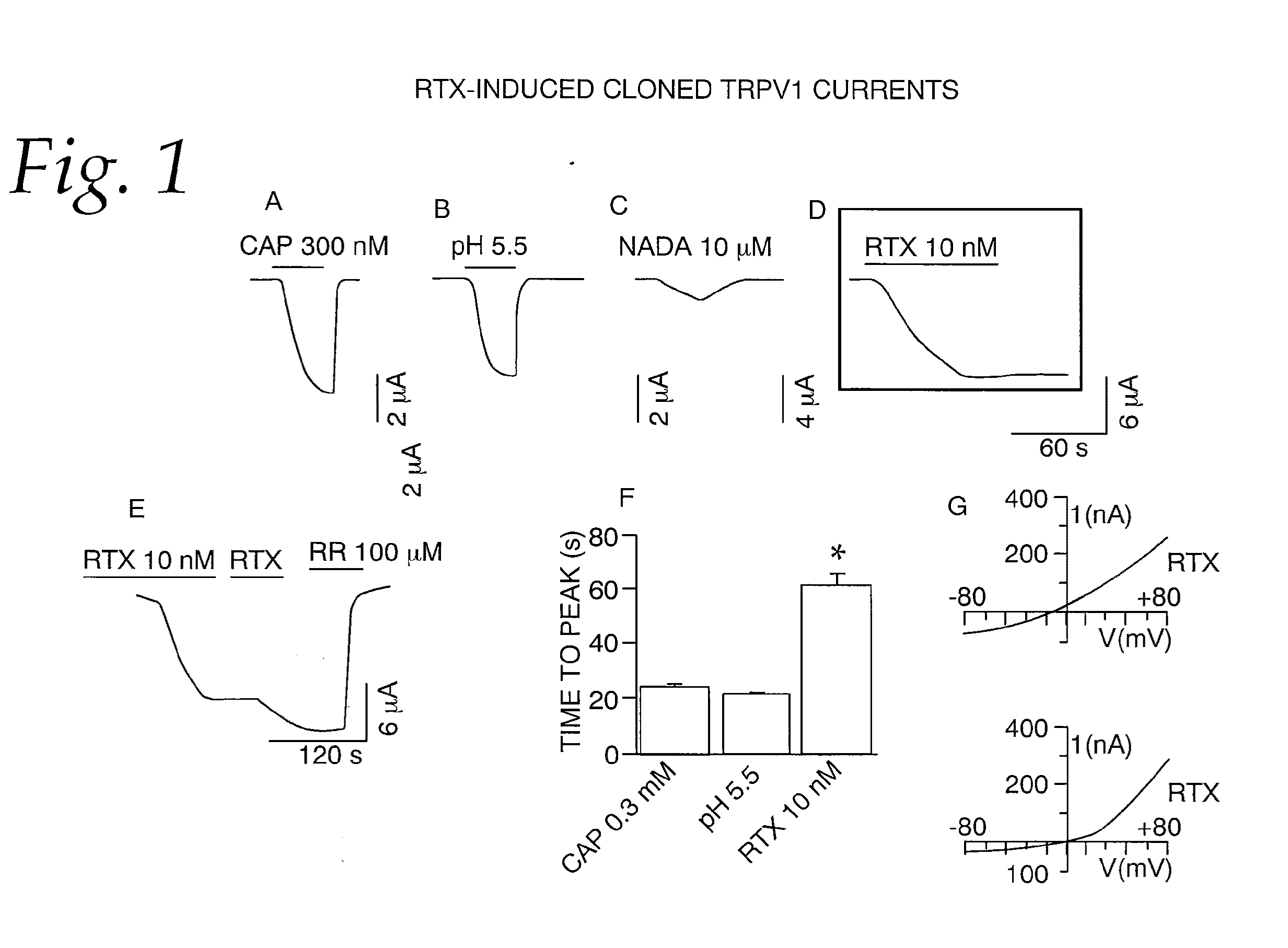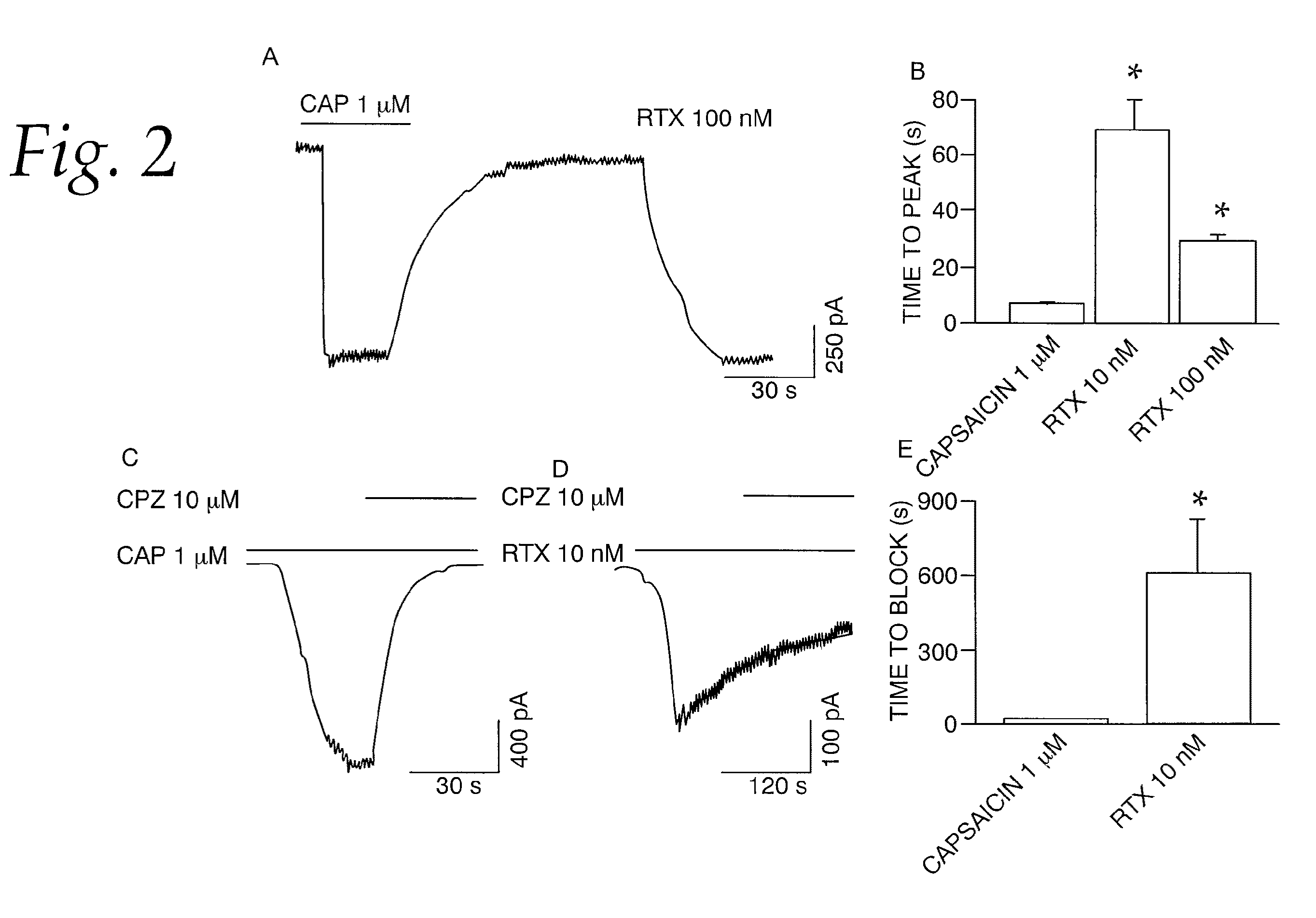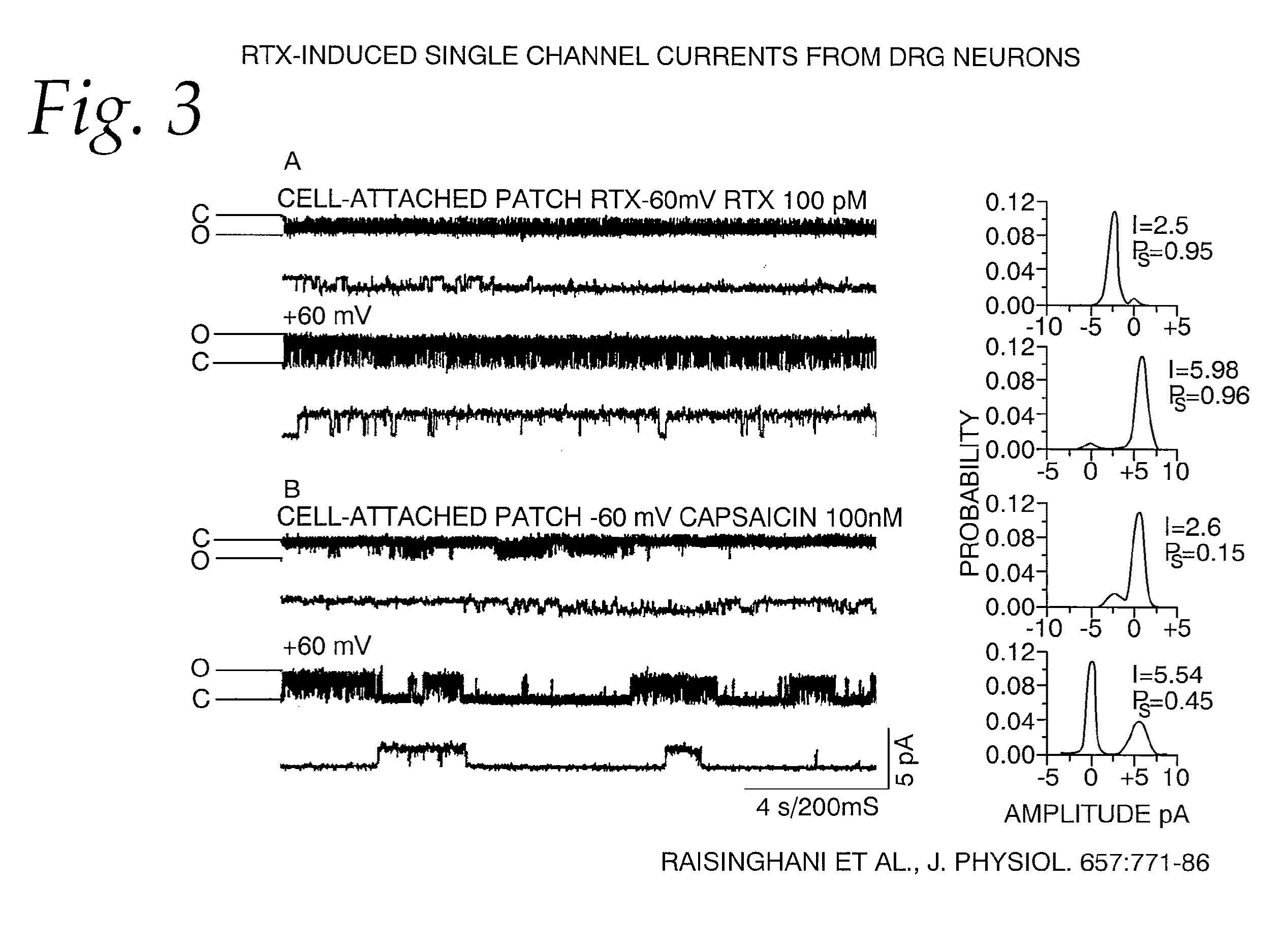Treatment of Pain With Resiniferatoxin and Related Analogs
a technology of resiniferatoxin and pain, applied in the field of chronic pain conditions, can solve the problems of nerve terminal death, sustained increase in intracellular casup>2+/sup>, etc., and achieve the effects of preventing significant regeneration of nerve terminals, avoiding permanent damage, and facilitating nerve terminal regeneration
- Summary
- Abstract
- Description
- Claims
- Application Information
AI Technical Summary
Benefits of technology
Problems solved by technology
Method used
Image
Examples
example 1
[0063]This example tests the activation of whole-cell currents in oocytes by RTX. Whole-cell currents were recorded from oocytes heterologously expressing TRPV1. At a holding potential of −60 mV, application of capsaicin (300 nM), protons (pH 5.5), N-arachidonyl dopamine (NADA) (10 μM) and RTX (10 nM) induced inward currents. NADA is a weak agonist and did not induce a maximal response even at a concentration of 10 μM. The currents induced by capsaicin, protons and NADA could be reversed readily when the agonists were removed (FIG. 1A-C). In contrast, RTX-induced currents did not deactivate even after a prolonged washout (>15 min) (FIG. 1D). Qualitatively, it is clear that the activation and deactivation phases are different for RTX-induced currents as compared to currents activated by capsaicin, protons and NADA. (FIG. 1A, B and C). RTX-induced currents are activated slowly and minimally deactivated (FIGS. 1D and E). Moreover, repeated application of a submaximal concentration of R...
example 2
[0064]This example tests the activation of whole-cell current in DRG neurons by RTX. We determined the properties of RTX-induced membrane currents on native TRPV1 in embryonic DRG neurons grown in culture. The cells were voltage-clamped at −60 mV and currents were evoked by RTX and capsaicin. Protons were not used to elicit currents because of the presence of acid-sensitive ion channels in these neurons. Capsaicin-induced (1 μM) currents were readily reversible. However, as previously observed in oocytes (FIG. 1D), RTX (10 and 100 nM) induced a sustained current that could not be reversed readily even after a prolonged washout (>15 min) (FIG. 2A). Furthermore, capsaicin-induced currents exhibited a relatively fast activation and deactivation phase, whereas RTX-induced currents exhibited significantly slower activation phase as compared to capsaicin-induced currents (RTX 10 nM, 69±10.9, n=6; RTX 100 nM, 29.35±2.65 s, n=6; capsaicin 1 μM, 7.14±0.42 s, n=66) (P<0.001, FIGS. 2A and B). ...
example 3
[0066]This example tests the single channel currents activated by RTX and capsaicin in native and cloned TRPV1.
[0067]Single-channel conductance. To further evaluate the properties of TRPV1 activation by RTX, we recorded single-channel currents from cell-attached and excised patches from DRG neurons and oocytes heterologously expressing TRPV1. All recordings were carried out in the absence of extracellular calcium to avoid tachyphylaxis and desensitization of channel activity. (Docherty et al. 1996; Caterina et al. 1997; Koplas et al. 1997.) Single-channel current activity in cell-attached patches from DRG neurons were recorded at −60 and +60 mV, as shown in FIG. 3. Single-channel current amplitude of RTX-induced currents was 2.3±0.21 pA (n=8) at −60 mV and 6.02±0.14 pA (n=6) at +60 mV corresponding to a conductance of 38.3±3.5 pS and 100±2.2 pS, respectively (FIG. 3A). Although RTX is a potent agonist, single-channel conductance is lower at negative potentials as compared to positiv...
PUM
| Property | Measurement | Unit |
|---|---|---|
| volume | aaaaa | aaaaa |
| TRPV1 currents | aaaaa | aaaaa |
| volume | aaaaa | aaaaa |
Abstract
Description
Claims
Application Information
 Login to View More
Login to View More - R&D
- Intellectual Property
- Life Sciences
- Materials
- Tech Scout
- Unparalleled Data Quality
- Higher Quality Content
- 60% Fewer Hallucinations
Browse by: Latest US Patents, China's latest patents, Technical Efficacy Thesaurus, Application Domain, Technology Topic, Popular Technical Reports.
© 2025 PatSnap. All rights reserved.Legal|Privacy policy|Modern Slavery Act Transparency Statement|Sitemap|About US| Contact US: help@patsnap.com



